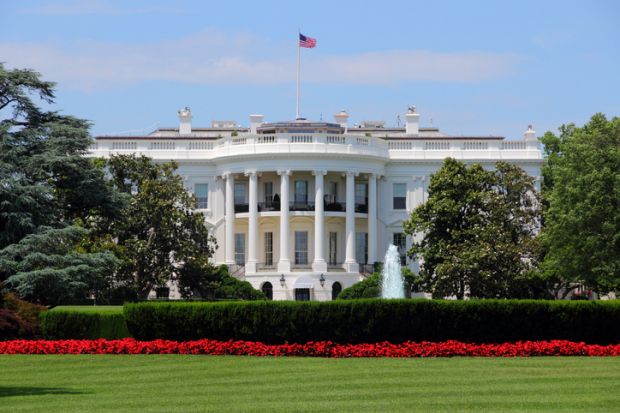The Trump administration has outlined a plan for higher education reform that aims to attack the crisis in student loan debt largely by reducing the availability of federal loan money.
The plan, set forth in a five-page policy statement, calls for limits on total borrowing in a subsidised loan programme used by parents and older students.
It also suggests combining various other student loan programmes, with a cap on monthly repayment amounts and a broad loan forgiveness for undergraduate borrowers after 15 years of repayment.
The president's daughter, Ivanka Trump, who serves as a White House adviser, said on Twitter that the proposal will modernise the US system of higher education “to ensure access to affordable, flexible, demand-driven education for Americans of all ages”.
The plan largely reflects positions previously put forth by the White House and congressional Republicans. The chair of the Senate’s education committee, Lamar Alexander of Tennessee, issued a two-sentence reaction to the White House plan saying that it was “helpful to have these suggestions”.
Both Mr Alexander and his Democratic counterpart in the House, Bobby Scott of Virginia, have set a goal of writing a comprehensive education policy bill during the two-year congressional session that began in January.
In his statement, Mr Alexander set for himself an ambitious schedule, saying that he hoped to send his overhaul bill “to the full Senate before summer”.
Higher education is not typically a driving force in US political campaigns. But attention to the issue appears greater than usual heading into the 2020 campaign, given that the total level of student loan debt held nationwide is now about $1.5 trillion (£1.1 trillion), a 350 per cent increase since 2003.
In calling for limits on federally subsidised loans to parents and graduate students, the Trump administration embraced a position that proved controversial for the Obama administration. Such limits appear to help protect families from financial harm, but at the cost of reducing customers for smaller colleges struggling for tuition fees.
In other areas of its policy outline, the Trump administration promised increased attention to “institutional accountability”. It provided scant details and promised to work with Congress on specifics.
The administration, however, affirmed its belief in measuring colleges by initial job success. It said that colleges that accept taxpayer funds – which is the overwhelming majority of them – must “share in the financial responsibility associated with student loans”.
Similarly, the administration plan reiterated past calls for boosting vocational-oriented programmes, including making students in such shorter-term educational offerings eligible for Pell Grants and federal “work study” benefits, and studying other ways of helping them. “There should be multiple educational pathways to a successful career, and the federal government shouldn’t pick winners and losers amongst them,” the US secretary of education, Betsy DeVos, said.
The White House also called in its plan for job-focused priorities to be better reflected in the federal system of accreditation, which is used to judge institutional quality for the purpose of student aid eligibility. The administration did not directly demand that traditional colleges accept transfer credits from their lower-tier counterparts, as it has suggested in the past, but its plan does ask that institutions make their credit transfer policies clearer.
The plan also urged greater support for historically black colleges, and proposed greater federal financial aid for prison inmates.
Register to continue
Why register?
- Registration is free and only takes a moment
- Once registered, you can read 3 articles a month
- Sign up for our newsletter
Subscribe
Or subscribe for unlimited access to:
- Unlimited access to news, views, insights & reviews
- Digital editions
- Digital access to THE’s university and college rankings analysis
Already registered or a current subscriber? Login








